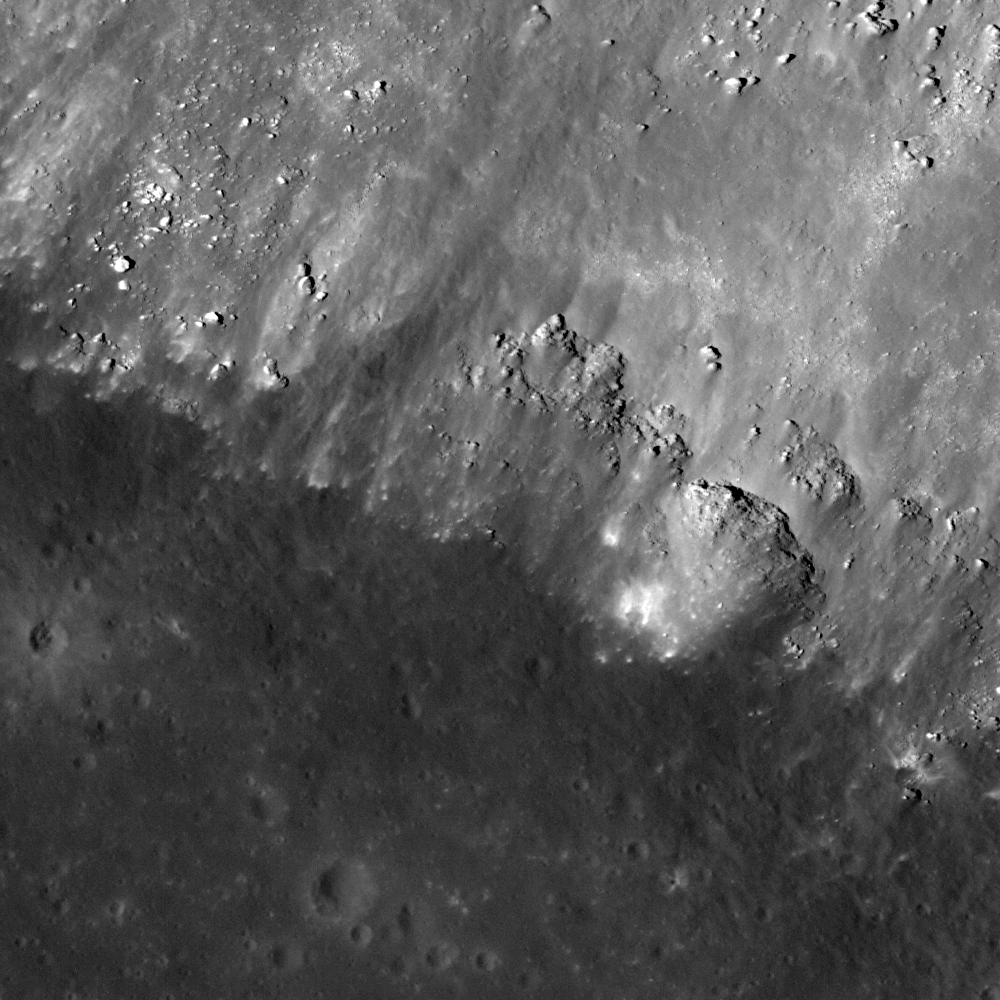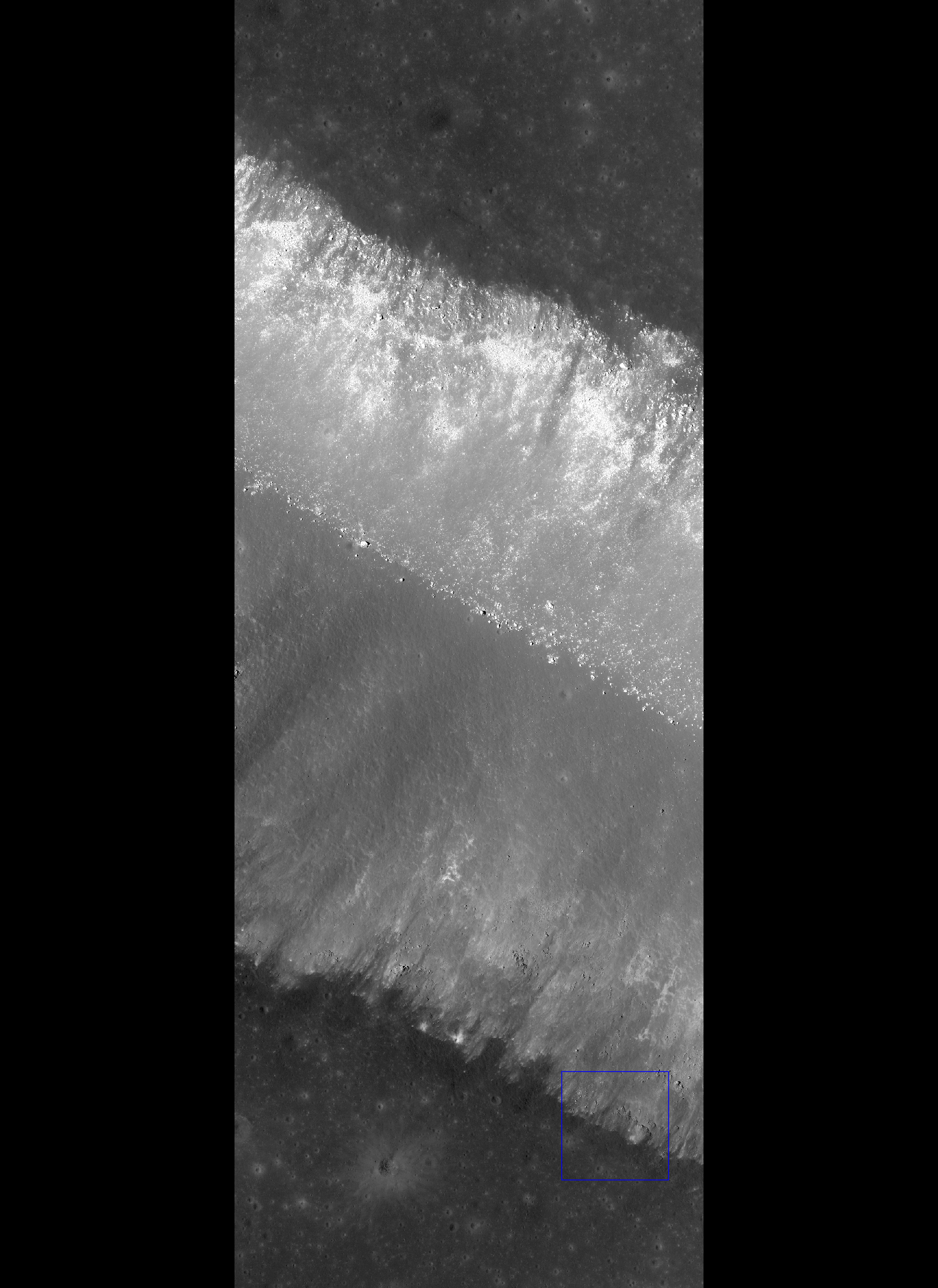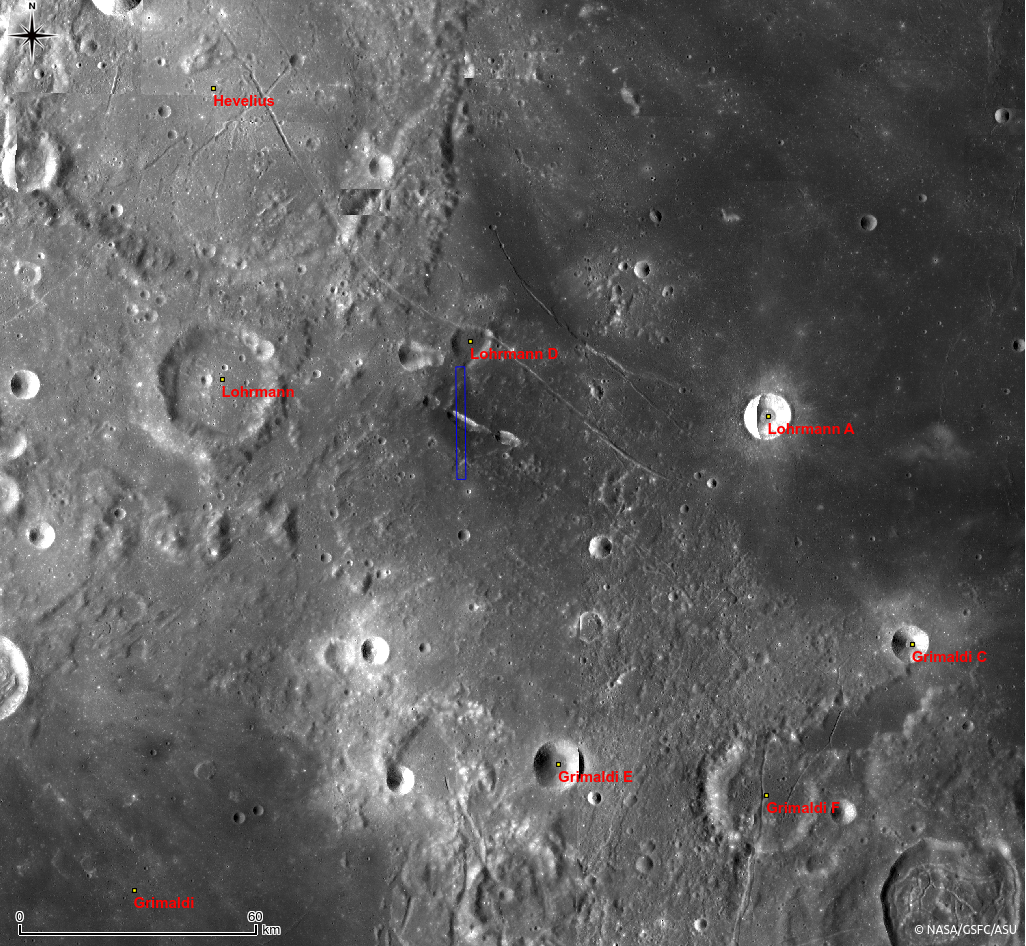
Today's Featured Image highlights a portion of an unnamed vent (latitude 0.80°S, longitude 294.69°E) located about 20 km south of Lohrmann D crater that extends northwest to southeast and parallel to Rimae Hevelius. The size of this vent is about 12.5 by 3 km. Due to the surrounding relatively smooth and low albedo materials in this area (see WAC context image below), a volcanic eruption associated with pyroclastic deposits is suspected here.
As seen in the NAC zoom out view (above), there is a sharp boundary between the slope covered by relatively high reflectance materials and the dark, possibly pyroclastic materials at the top of the flat area surrounding the vent. The sharp boundary of the two different layers shows the stratigraphic bedding plane. Other rim portions of this vent were collapsed and the dark materials slid down the slope, so it is hard to recognize the bedding plane.
Estimating the volume of erupted dark material is, in theory, simple. First map the surface extent of the unit and then measure its thickness exposed in the vent wall. However in the opening image, you can see that it is hard to distinguish the actual top of the dark mantle because it has slumped into the vent, blurring the real edge. A NAC DTM (high resolution digital terrain model from NAC stereo images) may provide a better estimate of the layer thickness and thus the volumes, by constructing a three dimensional surface model of the bedding plane. Also the depth, void volume, slope angles, and the layer structures of the vent will help to model the eruption mechanisms, which allows us to understand the ancient volcanic activities on the Moon.
Explore this unnamed volcanic vent by full NAC frame yourself!
Related Posts:
Pyroclastic Excavation, A Dark Cascade at Sulpicius Gallus, Rima Bode: Constellation region of interest, Alphonsus crater mantled floor fracture, Dark surface materials surrounding Rima Marius
Published by Hiroyuki Sato on 5 September 2012

